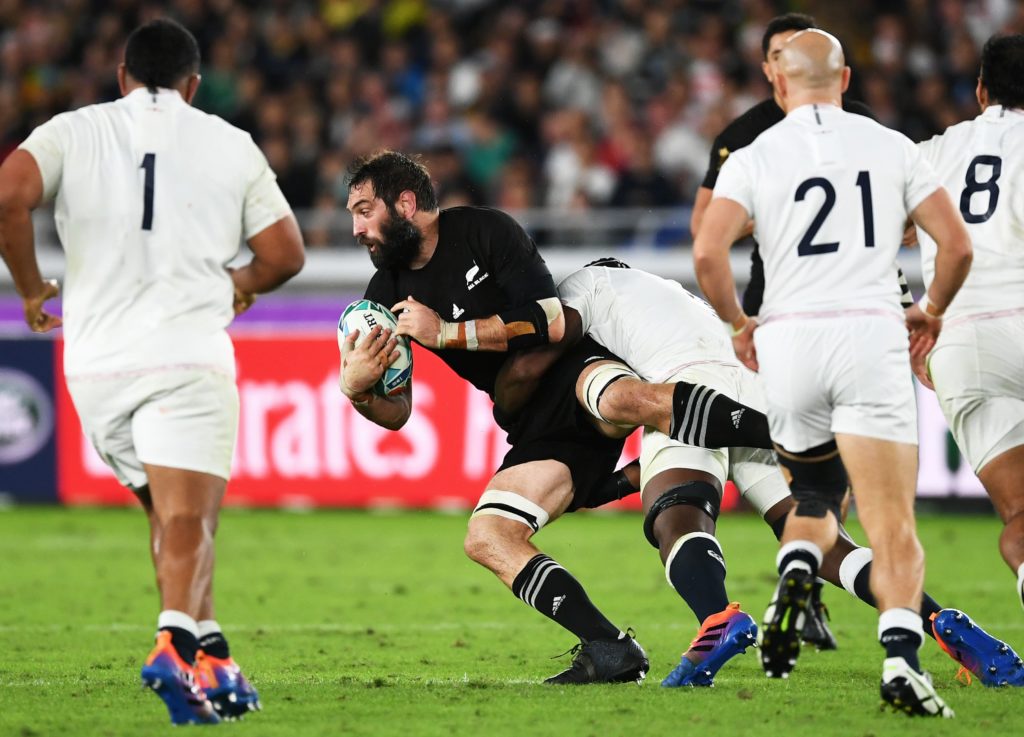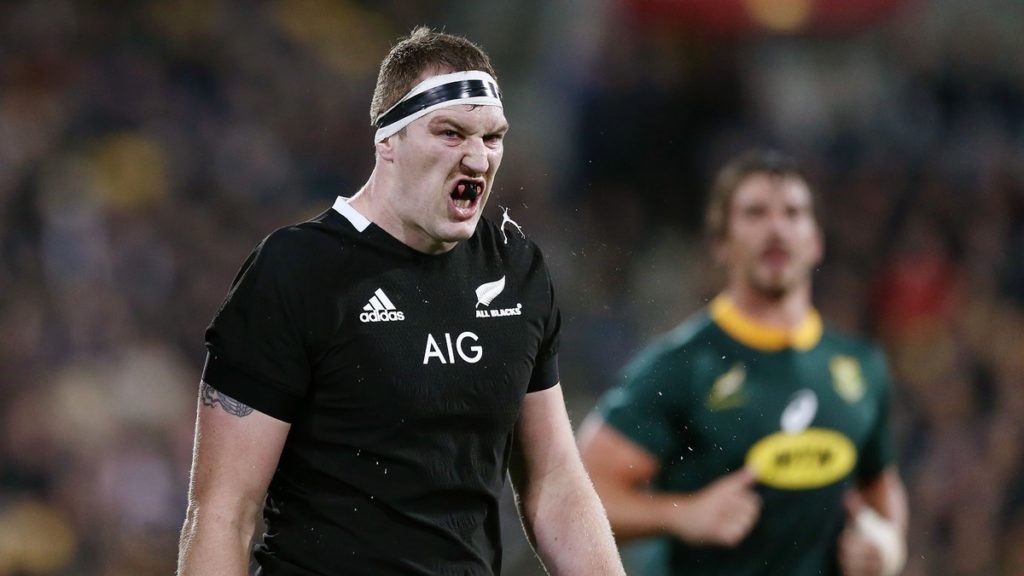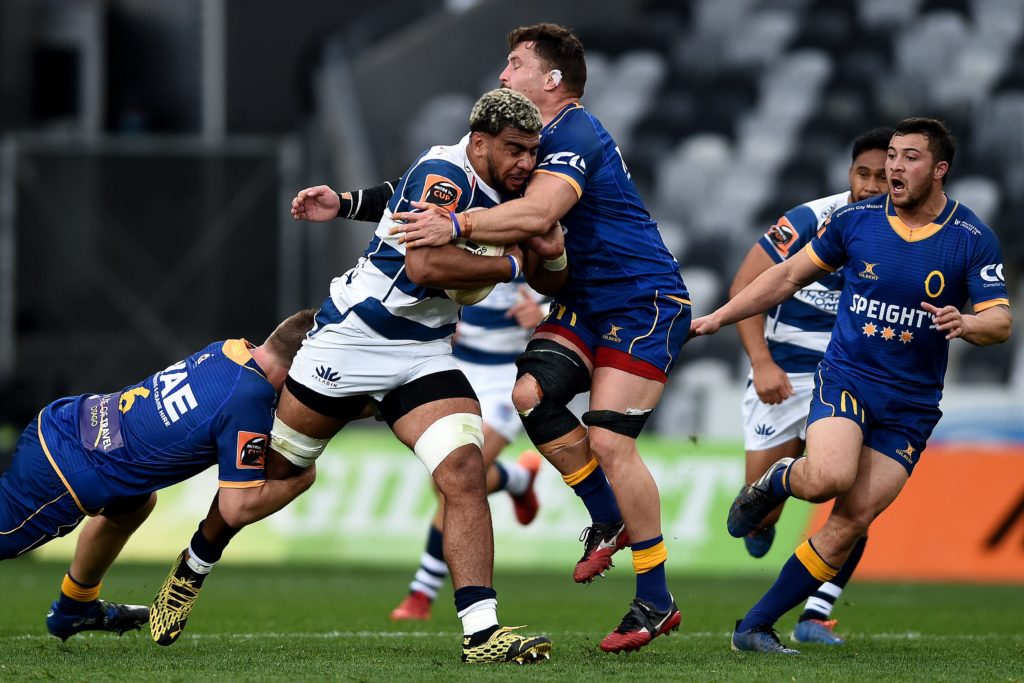Over the next few months there will be continuing conjecture in New Zealand and further afield about the relative merits of No 10s Richie Mo’unga and Beauden Barrett and the problem All Blacks’ midfield area, but the number one issue the coaches must address this year is their players’ ability to impose themselves physically on the opposition.
Assistant John Plumtree was brought in by head coach Ian Foster early last year on a mandate to improve this area in particular. “We need to grow our edge in that physical forward stuff and I think he will do that really well,” Foster told reporters last year after unveiling the former Hurricanes coach.
Back then it was a major work-on, as the Kiwi rugby jargon would have it, because it was so cruelly exposed by England at the 2019 World Cup. In the semifinal in Yokohama, the men in white set the tone from the first whistle by smashing the All Blacks and, oddly in a pack containing such big and physical characters as Joe Moody, Samuel Whitelock, Brodie Retallick, Scott Barrett and Kieran Read, there was very little coming back the other way.

The All Blacks had the proverbial Ferraris in the backline; Aaron Smith, Mo’unga and Barrett as tandem playmakers, Sevu Reece and George Bridge on the outside, but none of them got out of first gear. Rather, many found themselves stuck in reverse due to an onslaught, which, perhaps not surprisingly, England couldn’t replicate in the final against the Springboks.
There were warning signs before the England test in Japan; earlier in 2019 the All Blacks struggled to subdue the Pumas 20-16 in Buenos Aires, drew with South Africa 16-16 in Wellington and limply surrendered (following the red card for Scott Barrett) 47-26 in Perth. In hindsight, the near flawless 36-0 thrashing of the Wallabies at Eden Park on their return, and a 92-7 hammering of Tonga in Hamilton before their World Cup departure, may have papered over the cracks that the Boks almost exposed in the first pool game and which England laid bare for all to see.
So, where are we now? Contemplating three tests against Tonga and Fiji which, given the resources available to both nations and their preparation time, may not tell us much about whether Plumtree and his pack improved on their efforts last year when the All Blacks were physically dominated by Argentina in Parramatta, despite the Pumas’ Covid quarantine adversity, and the Wallabies in Brisbane.
It’s about consistency, and making sure every week we’re playing our best footy as a unit. It’s about winning ball, and around the park we want to dominate physically
All Blacks forwards coach John Plumtree
The Pumas’ triumph was one of rugby’s feel-good stories of the year, but it would have taken time for Foster and Plumtree to share that sentiment after watching their players getting bashed behind the advantage line by a side whose tackling practice in the days leading up to the test had been confined to their hotel meeting room.
The All Blacks convincingly won the next one against the Pumas 38-0 in what was their last test of the year but, in what would have disgusted tough All Blacks of old such as Wayne Shelford and the late Colin Meads, questions remained about the pack’s ability to put their potentially superb finishers on the front foot.
Plumtree recently revealed that lifting the levels of his players’ physicality was his main priority in an interview with Stuff, in which he said: “It’s the old story. We can’t have the All Blacks getting [messed] up. And it happened once or twice last year.”
Earlier he told the interviewer: “It’s about consistency, and making sure every week we’re playing our best footy as a unit. It’s about winning ball, and around the park we want to dominate physically – with and without the ball. These players want to be collectively dominant and they all want to improve their techniques so they can be that way.”

Suggesting that Retallick’s absence last year while he was on sabbatical in Japan de-powered the All Blacks pack is a bit like saying Australia struggled a little in the recent Super Rugby Trans-Tasman competition. It was there for all to see.
So, the veteran’s return will help significantly, and, as an aside, the recent footage of Retallick competing in an All Black “Bronco” fitness test and more or less keeping in touch with Beauden Barrett (ahead of just about every other forward), is an indication that the big lock has returned from his stint with the Kobelco Steelers in tremendous physical condition and with motivation intact.
There will be few concerns about Whitelock’s ability to be physically dominant due to his trademark relentless ruthlessness – and his form on return from a shorter stint in Japan is another good omen for Retallick. Likewise, top-line front rowers Moody, Codie Taylor, Dane Coles, Nepo Laulala and Karl Tu’inukuafe are consistently physical, although there is room for props Moody, Laulala and Tu’inukuafe to do more around the field away from the set piece.
Which leaves us with the loose forwards and a combination that has yet to find its feet following the retirement of Read in 2019, an unsettled mix not helped by skipper Sam Cane’s chest injury in this season’s Super Rugby Aotearoa which will rule him out until later in the year.
The recently retired Jerome Kaino took time to go from talented ball-player to one of the best defenders the game has seen, but both [Hoskins Sotutu and Akira Ioane] remain works in progress.
The loose trio looms as the most important factor in Plumtree’s search for greater physicality, and, if we assume that Ardie Savea starts at No 7 in the big tests against Australia and South Africa in August and September due to his experience and overall excellence over the last two years, that leaves blindside flanker and No 8 as, to put it politely, the biggest potential growth areas.
To put it bluntly, however, can the All Blacks afford to have both Akira Ioane and Hoskins Sotutu in a starting All Black loose forward trio in a test against the Boks or, later in the year, Ireland or France? Ioane impressed in his limited opportunities in the black jersey last year, while Sotutu found the step up a little more challenging. They are both highly skilled athletes but neither strike as possessing the ruthless attitude required to fight for every centimetre of ground in order to grind out a test victory against similarly big and powerful opponents.
They may get there; the recently retired Jerome Kaino took time to go from talented ball-player to one of the best defenders the game has seen, but both remain works in progress.

Which is one of the reasons why Shannon Frizell, a 27-year-old who has played 13 tests, will have the inside running as the All Blacks’ pre-eminent No 6. Frizell was the incumbent last year and would have impressed the selectors hugely this year via his work at the Highlanders where he was relentlessly strong and powerful in what was a slightly under-powered pack. It was his work rate and willingness to charge into set defences and make ground in spite of it that caught the eye.
Dalton Papalii, still only 23, was similarly busy at the Blues, albeit while playing in a slightly looser position and his regular turnovers added up to a compelling package. He largely played at No 7 for the Blues but could he be a candidate for No 6, with Frizell at No 8? Unlike in the midfield where currently it’s almost a case of last man standing gets selected following problems for Jack Goodhue (knee) and Braydon Ennor (appendicitis) and Anton Lienert-Brown’s more minor elbow issue, the selectors have options regarding the back row but that doesn’t necessarily mean their task is easier.
The wildcards are Luke Jacobson from the Chiefs, who has played two tests, and the uncapped Ethan Blackadder from the Crusaders.
The latter, a late developer like his dad, Todd, a former All Blacks captain, has upsides far beyond his ability to play all three loose forward positions as well as lock, if required. Blackadder, 26, has a relentless physicality that the All Blacks have been looking for since 2019.
It was his defensive ability which made him a regular starter at the Crusaders but he added a subtle attacking touch this year that made him more of an all-rounder. Crusaders forwards coach Jason Ryan has spoken to The XV before about Blackadder’s utter dedication to his craft. If he makes the step up, and presumably the selectors will want to have a look at him as a starter at some point over the next three weeks, then he could be the missing piece of the puzzle, the glue that binds the other two loose forwards and pack in general into an outfit which can rediscover its fear factor.



Comments
Join free and tell us what you really think!
Sign up for free